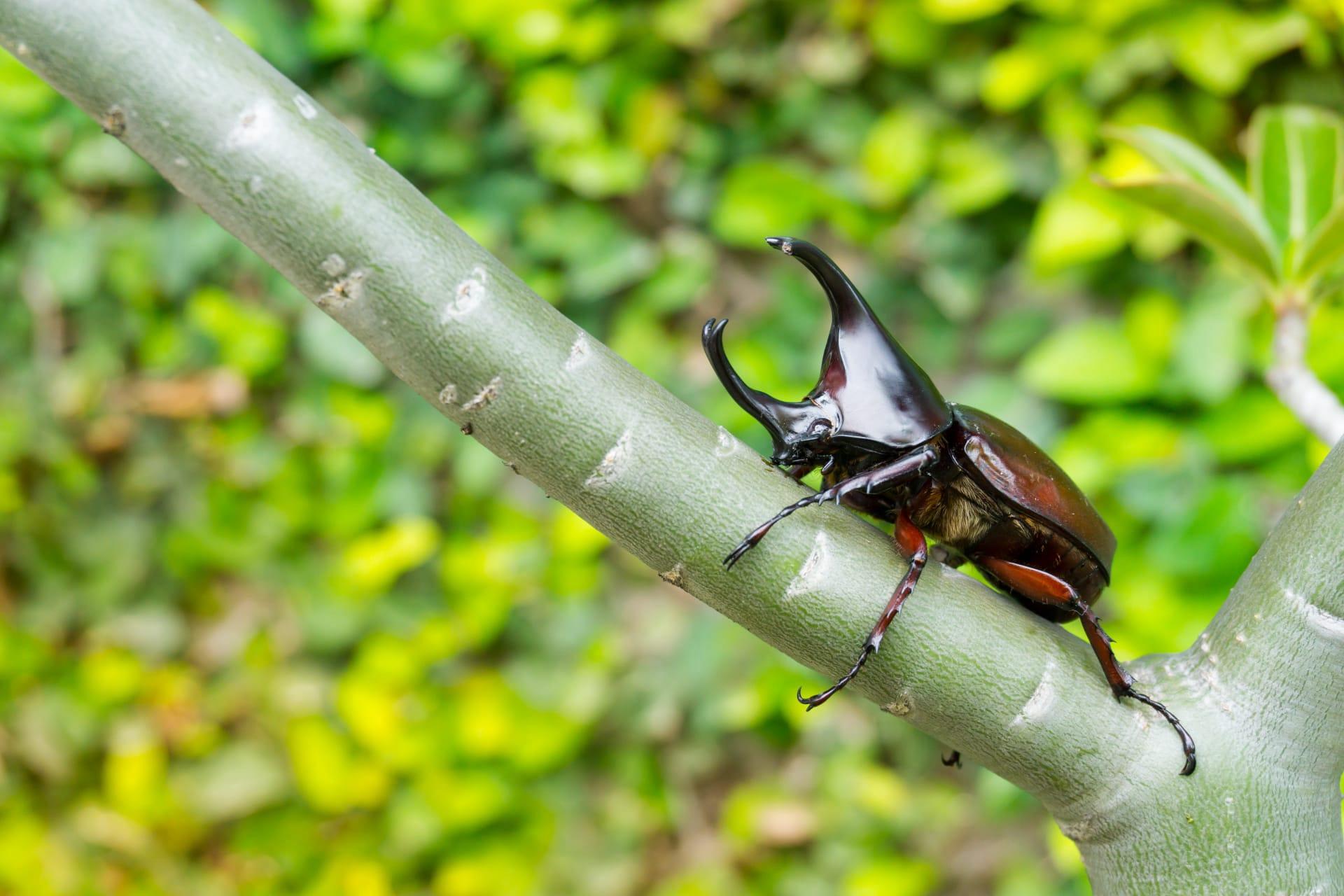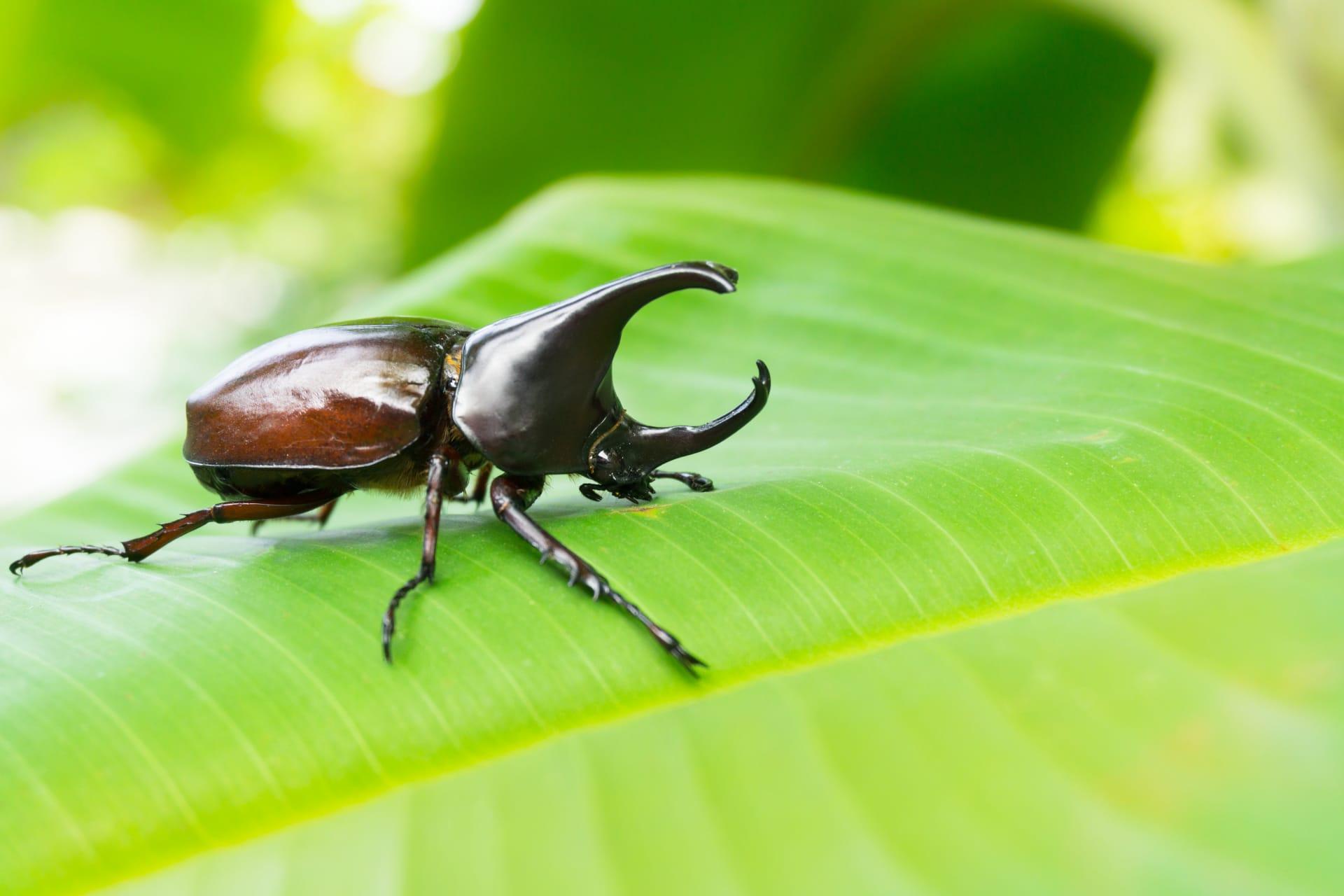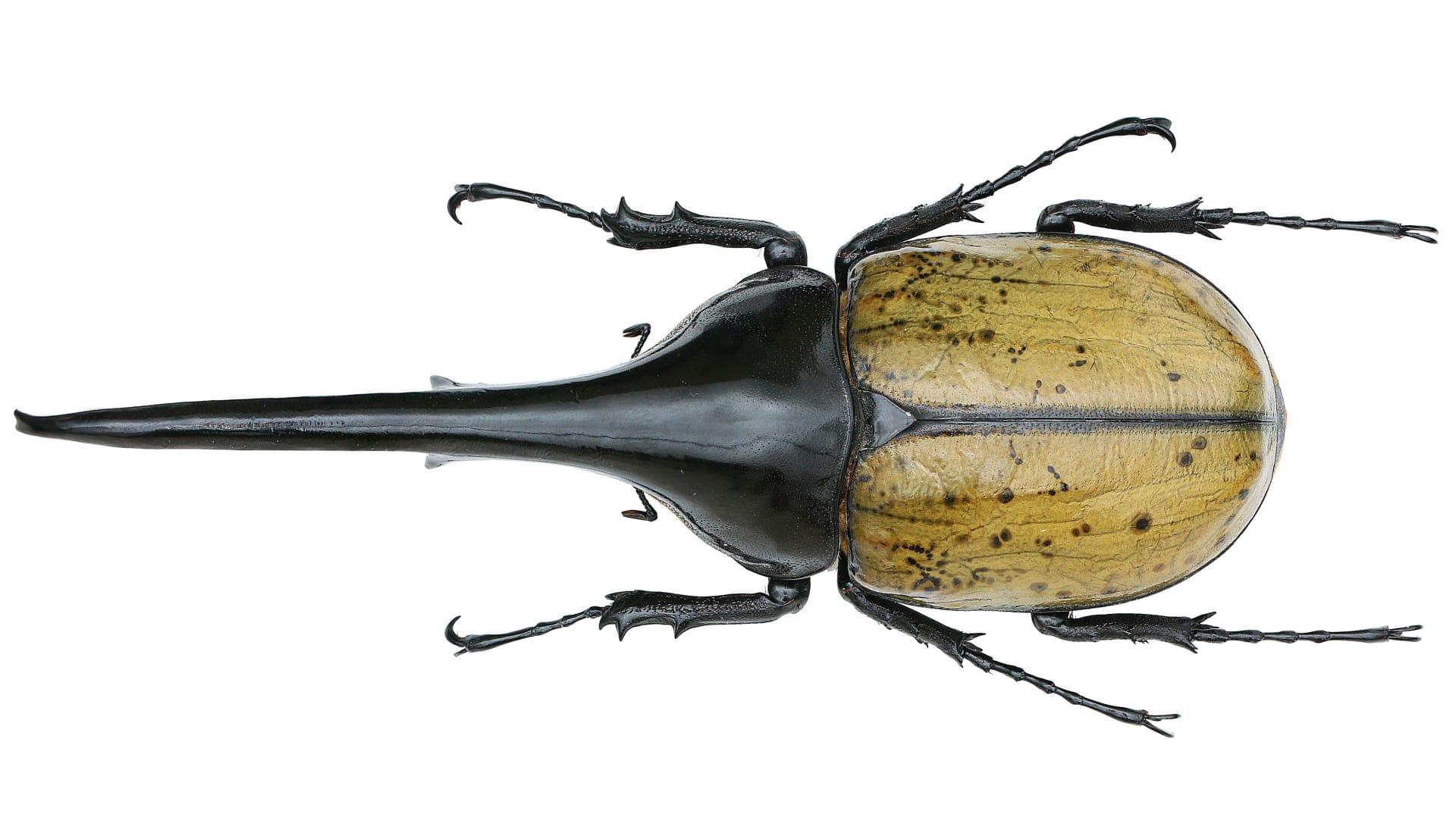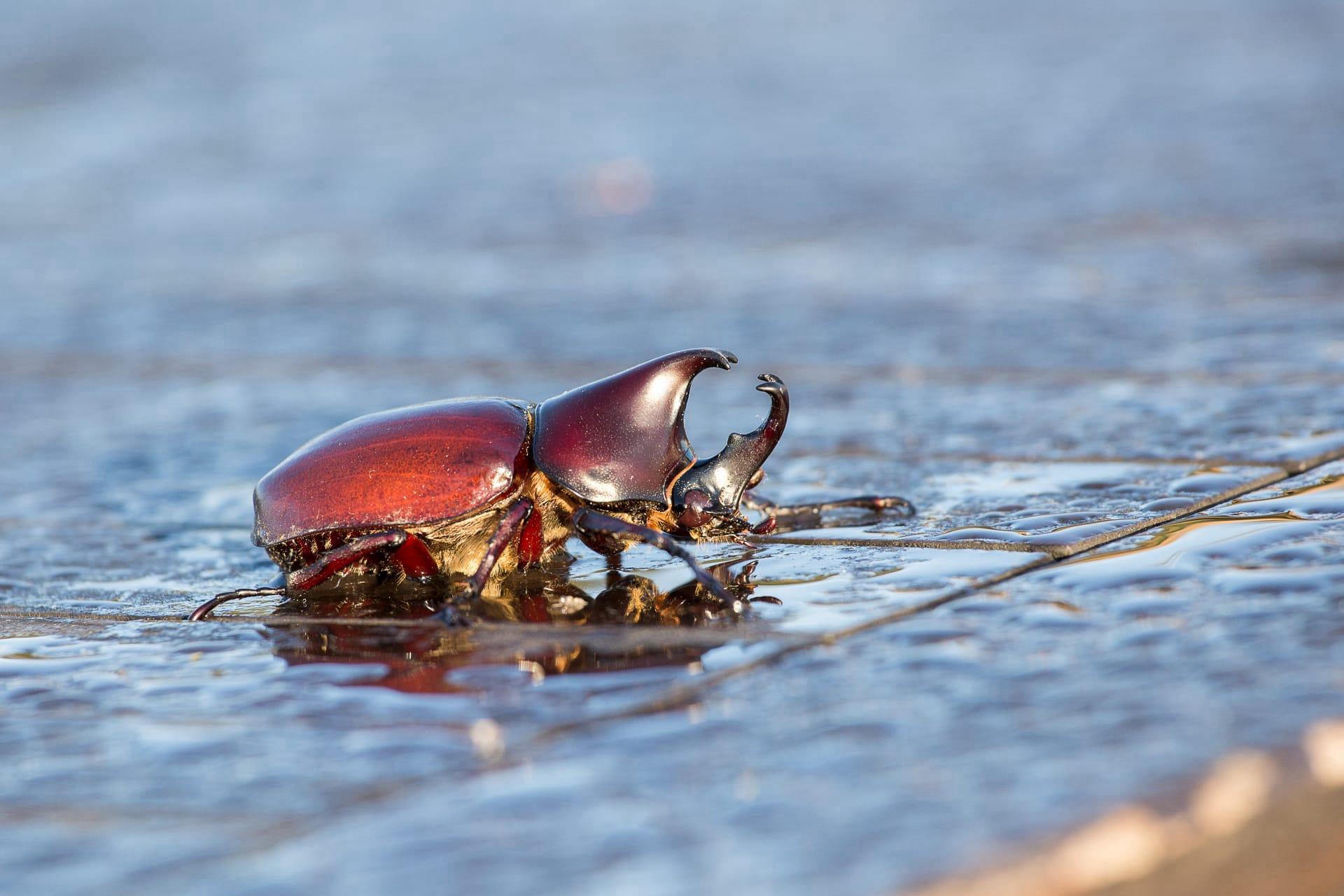1
Hercules Beetles (Dynastes hercules) are known for their remarkable strength, able to lift objects 850 times their own weight. This extraordinary feat is akin to a human lifting 65 tons, the weight of approximately 9 elephants. This strength is due to their specialized muscle structure and the leverage they gain with their long, powerful legs.
Their unique horns also set them apart. Male Hercules Beetles have enormous, elongated horns, which can grow up to 7 inches (18 cm), making them one of the longest among beetles. These horns are not just for show; they're used in battles with other males over territory and mates, functioning similarly to the antlers of deer.

2
Hercules Beetles undergo a dramatic transformation during their lifetime. Their larval stage can last up to 2 years, during which they can grow up to 4.5 inches (11.5 cm) in length. As larvae, they primarily feed on rotting wood, aiding in the process of decomposition in forests. This stage is crucial for their growth as they accumulate reserves for their metamorphosis.
Another fascinating aspect is their color-changing ability. The shells of adult Hercules Beetles can change color depending on the humidity. In dry conditions, they appear greenish-grey, but can turn to black or even a deep violet when it's more humid. This is due to the microscopic structure of their shells which refracts light differently under varying moisture levels.

3
The habitat of the Hercules Beetle is mainly in the rainforests of Central and South America. They thrive in warm, humid climates and are often found in rotting logs or other decaying plant matter, which provide both food and shelter. Their presence indicates a healthy, balanced ecosystem, as they play a significant role in nutrient recycling.
Despite their fearsome appearance and strength, Hercules Beetles are not harmful to humans. They are actually quite harmless and do not bite or sting. Their primary defense mechanism is their strong exoskeleton and their ability to play dead to avoid predators, relying on their natural camouflage to blend into their surroundings.

4
The lifespan of a Hercules Beetle is relatively short. After spending up to 2 years as a larva and another few months as a pupa, the adult stage lasts only around 3 to 6 months. During this time, their main focus is on reproduction. Males will often fly considerable distances to find a mate, showcasing their strength and endurance.
Females lay their eggs in rotting wood or compost where the larvae will have immediate access to food upon hatching. A single female can lay up to 100 eggs in her lifetime, ensuring the continuation of the species. The larvae are equipped with strong jaws from birth, allowing them to start feeding on tough plant material right away.

5
Hercules Beetles are a popular subject in entomology and a favorite among insect collectors due to their impressive size and unique appearance. Their popularity has even led to them being kept as pets in some cultures, where they are admired for their strength and distinctive look.
However, their popularity has a downside. The Hercules Beetle is facing threats from habitat loss and the pet trade. Deforestation in their native habitats reduces their natural living spaces, while capture for trade disrupts their natural life cycle and population dynamics. Conservation efforts are crucial to ensure the survival of these magnificent beetles for future generations to admire and study.